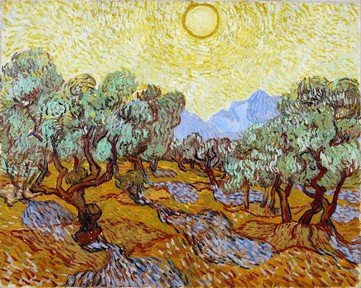Quiz Answer Key and Fun Facts
1. Probably one of the earliest European paintings containing references to black magic and witchcraft, the triptych of "The Temptation of St Anthony" (a detail from which is shown in the photo) was painted by what early 16th-century Northern European artist, famous for his use of uniquely disturbing imagery?
2. Albrecht Dürer's most talented student, German painter Hans Baldung Grien is known for his religious works, but also for introducing eroticism and witchcraft into German Renaissance art. In this painting, simply known as "Two Witches", one of the attractive, naked female figures holds up a bottle containing quicksilver (mercury), which was used to treat which potentially deadly, sexually transmitted disease?
3. Although this portrait of a beautiful, richly dressed woman by Italian Renaissance artist Dosso Dossi is now known as "Melissa", it was long identified with what sorceress of Greek myth, a character in Homer's "Odyssey"?
4. French painter Georges de la Tour was one of his country's foremost Baroque artists. Though "The Fortune Teller" is not typical of his style, it was inspired by a painting on the same subject by which seminal Italian artist of the same era, whose use of chiaroscuro was a major inspiration for de la Tour's work?
5. Known for his dramatic landscape paintings as well as his colourful personality, Salvator Rosa is a cult figure of Italian and European Baroque painting. He often painted scenes of magic and witchcraft like the one shown in the photo, the rather sinister "Witches at Their Incantations". Which Italian city, known for its scenery and volcanic activity, did Rosa hail from?
6. "Witches' Sabbath" (El Aquelarre) is one of a number of paintings by Francisco Goya on the subject of witchcraft, believed to have been created as a protest against the pervasive influence of which powerful institution - the instigator of many witch hunts?
7. This 1796 painting, titled "The Night-Hag Visiting Lapland Witches", and inspired by an episode in John Milton's "Paradise Lost", includes some of the themes that appear in this Anglo-Swiss artist's most famous work, "The Nightmare". What is this influential Romantic painter's name?
8. The work of English painter Evelyn de Morgan draws heavily upon mythology, allegory and spiritual themes. One of her most famous paintings, "The Love Potion", shows a sorceress intent at her work, surrounded by symbols of magic and alchemy. This painting is an example of the late stage of which iconic artistic movement that developed in Victorian England?
9. This striking painting, titled "Kullervo's Curse" (Kullervon kirous), is part of a series of works by Finnish painter Akseli Gallén-Kallela, created at the turn of the 20th century, and inspired by what literary work, Finland's national epic?
10. Painted in 1902, "Le Sorcier d'Hiva-Oa" (The Sorcerer of Hiva-Oa) shows an enigmatic figure wearing a red cape and surrounded by exotic animals and plants. This painting is one of the most intriguing works of which major post-Impressionist artist, also known for his friendship with Vincent Van Gogh?
Source: Author
LadyNym
This quiz was reviewed by FunTrivia editor
looney_tunes before going online.
Any errors found in FunTrivia content are routinely corrected through our feedback system.
